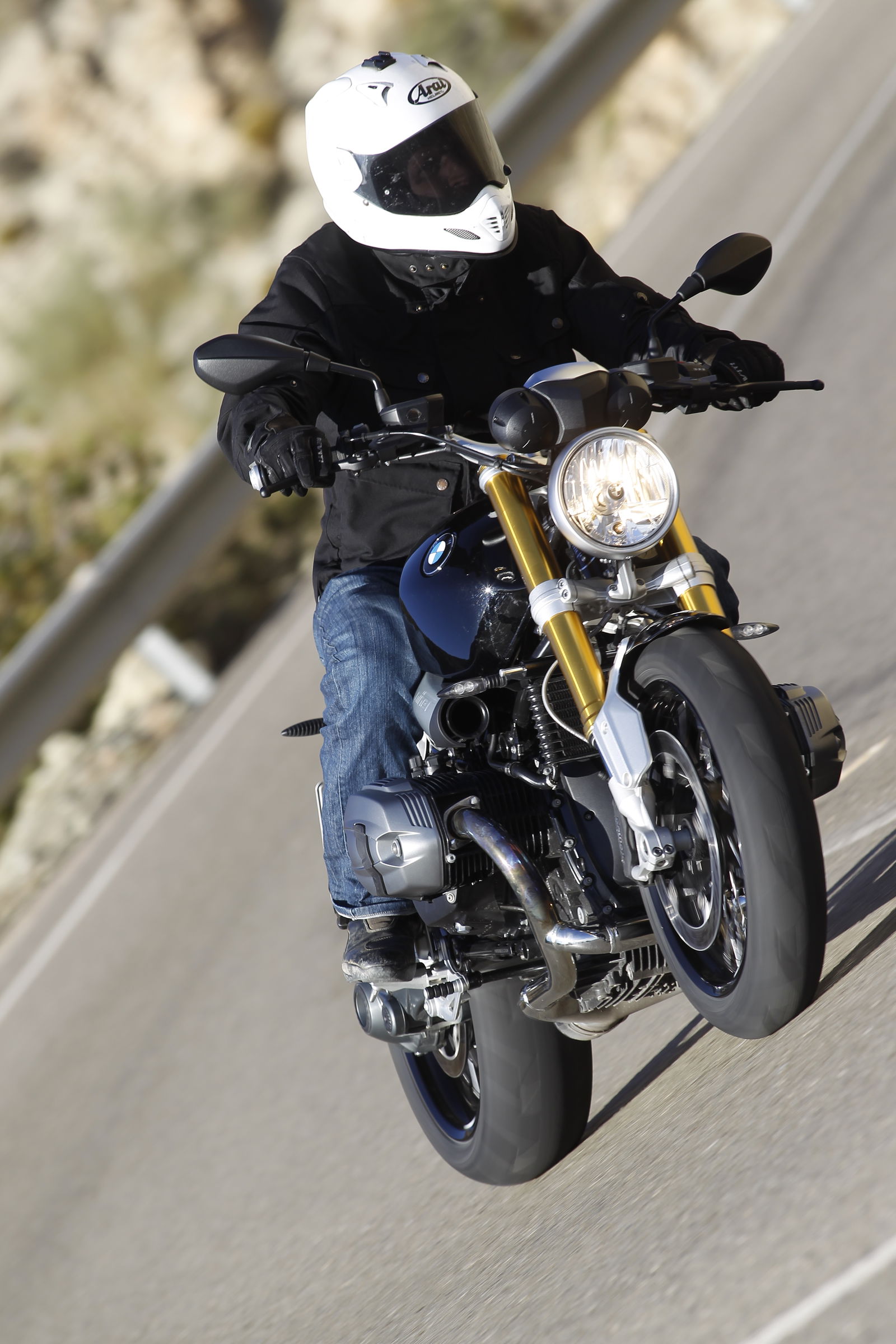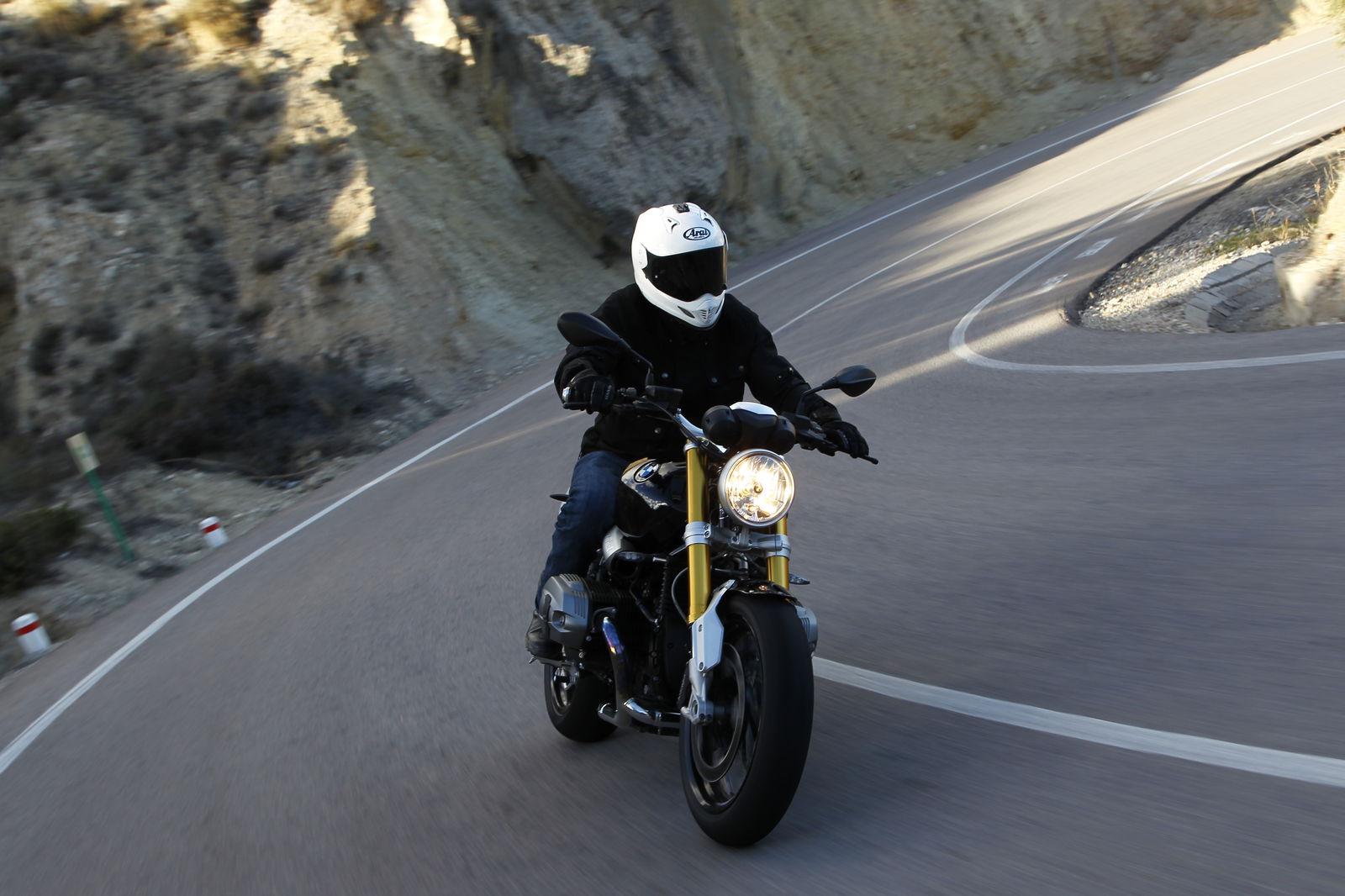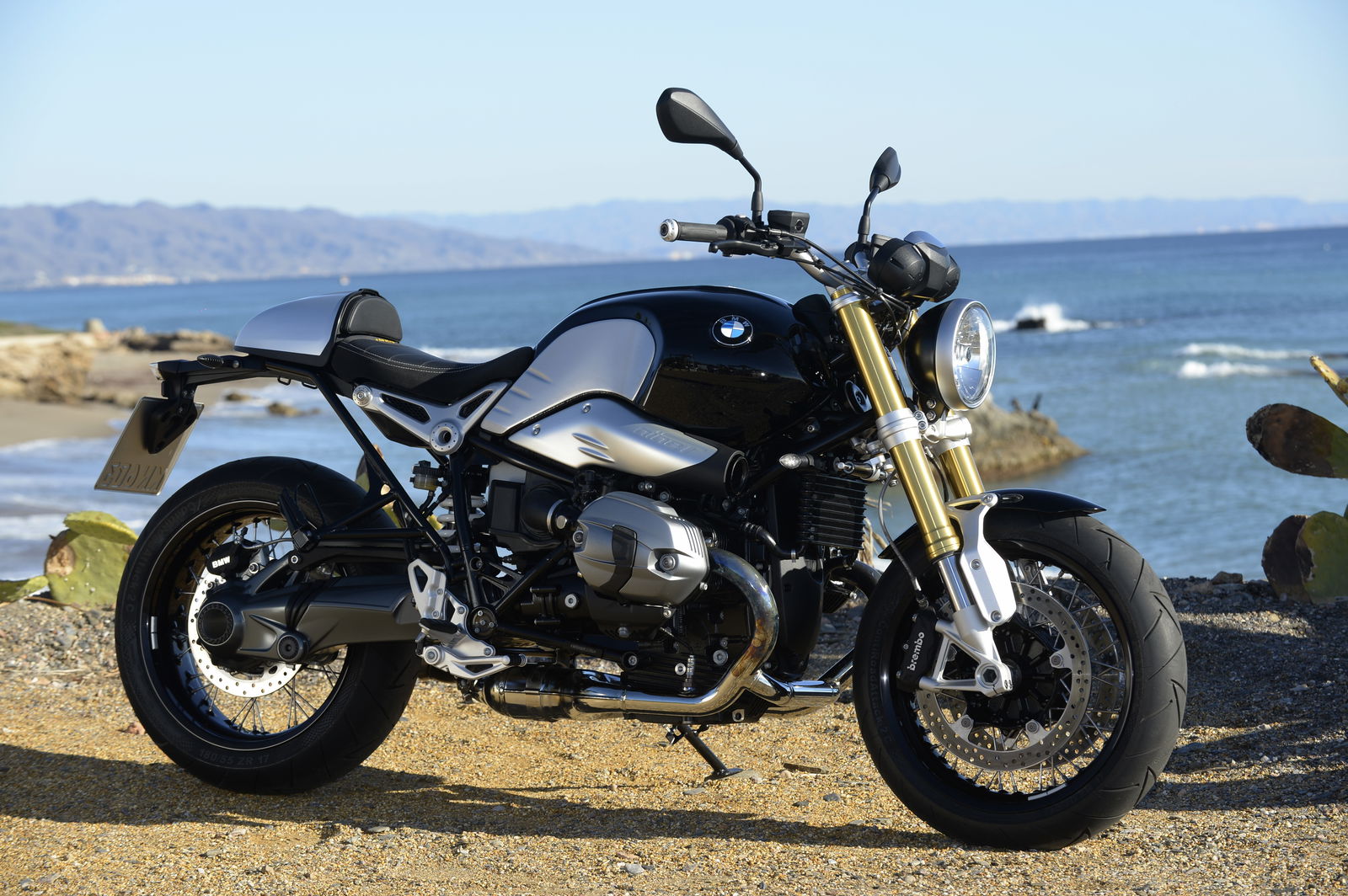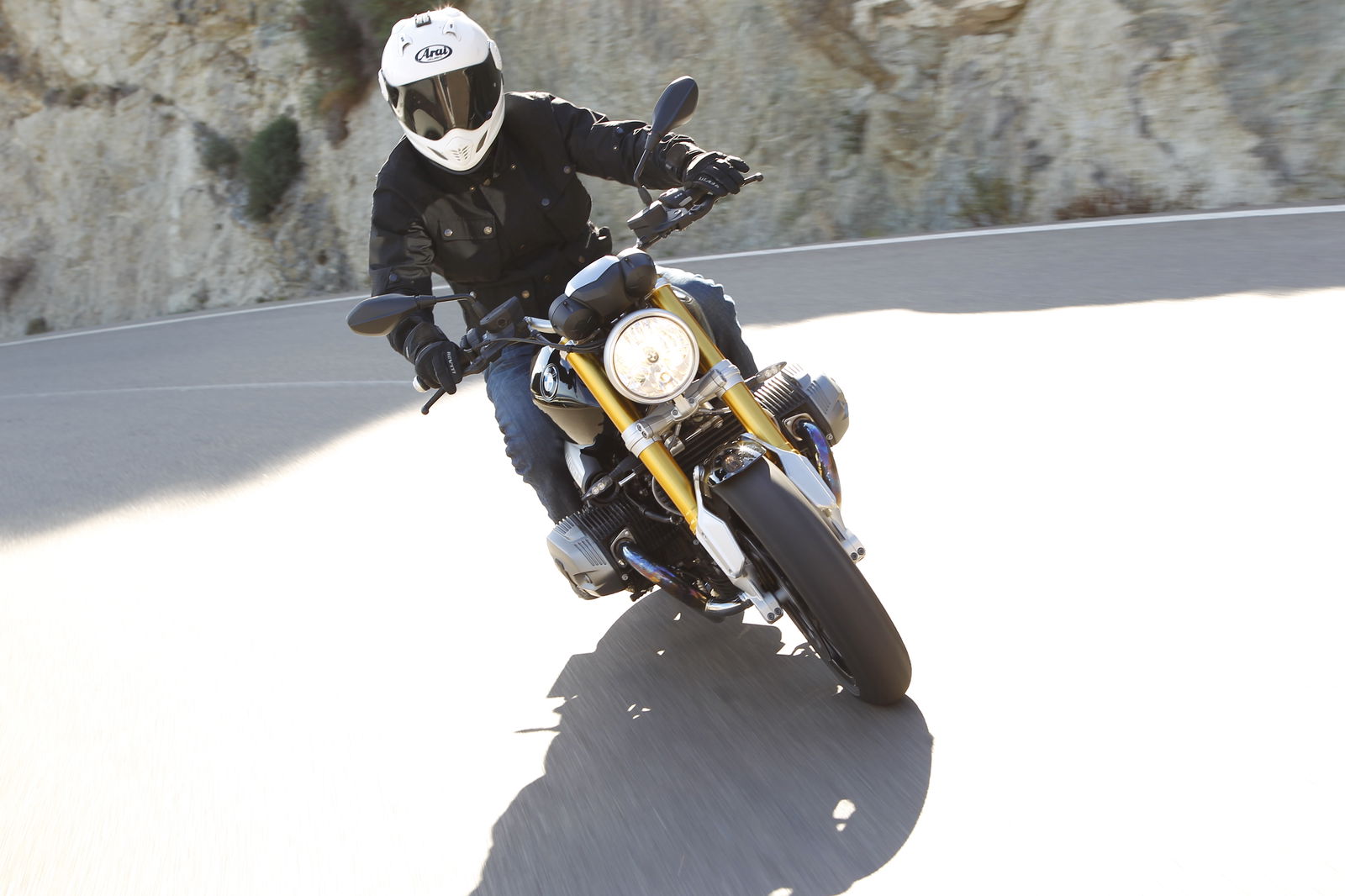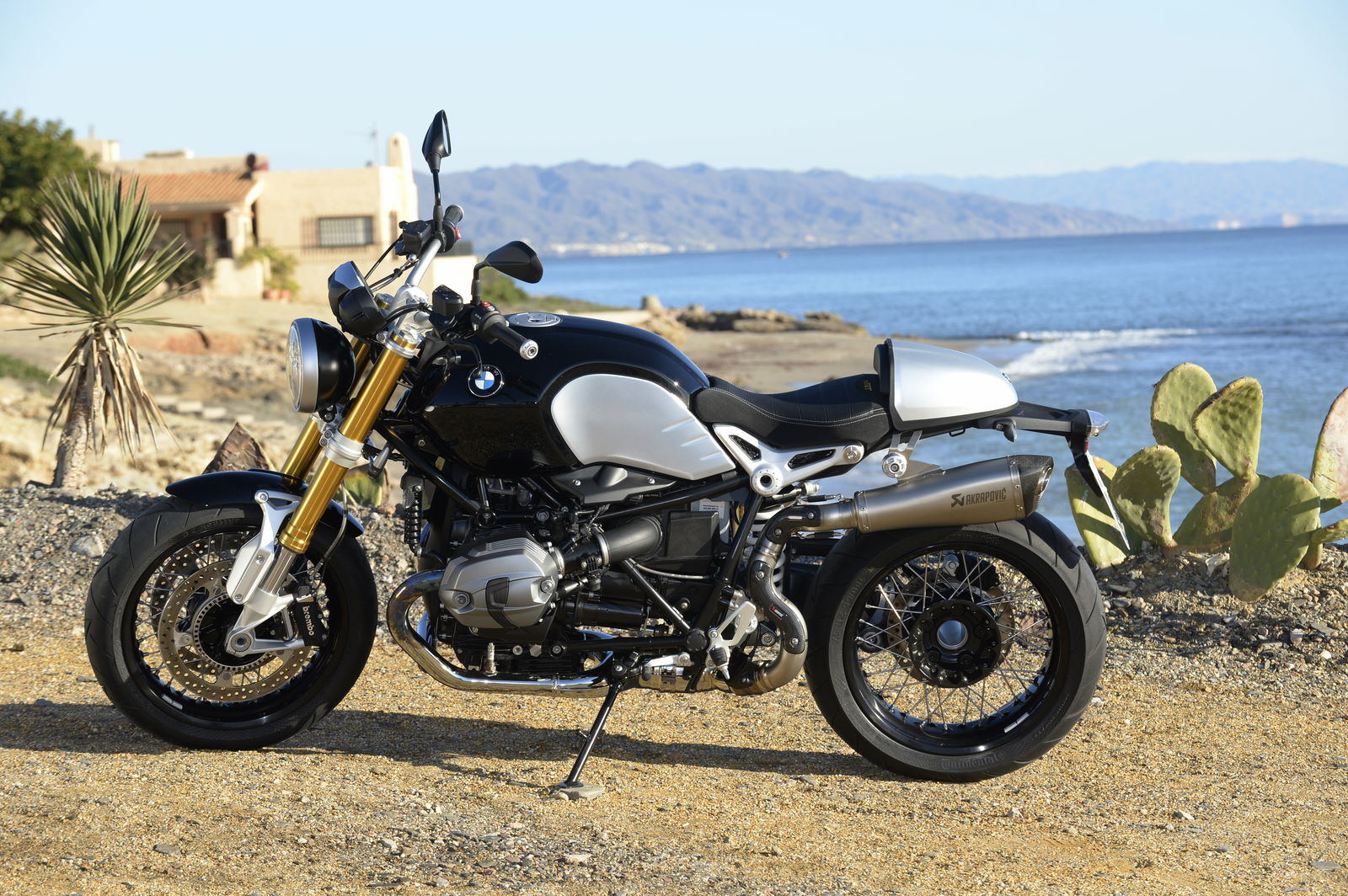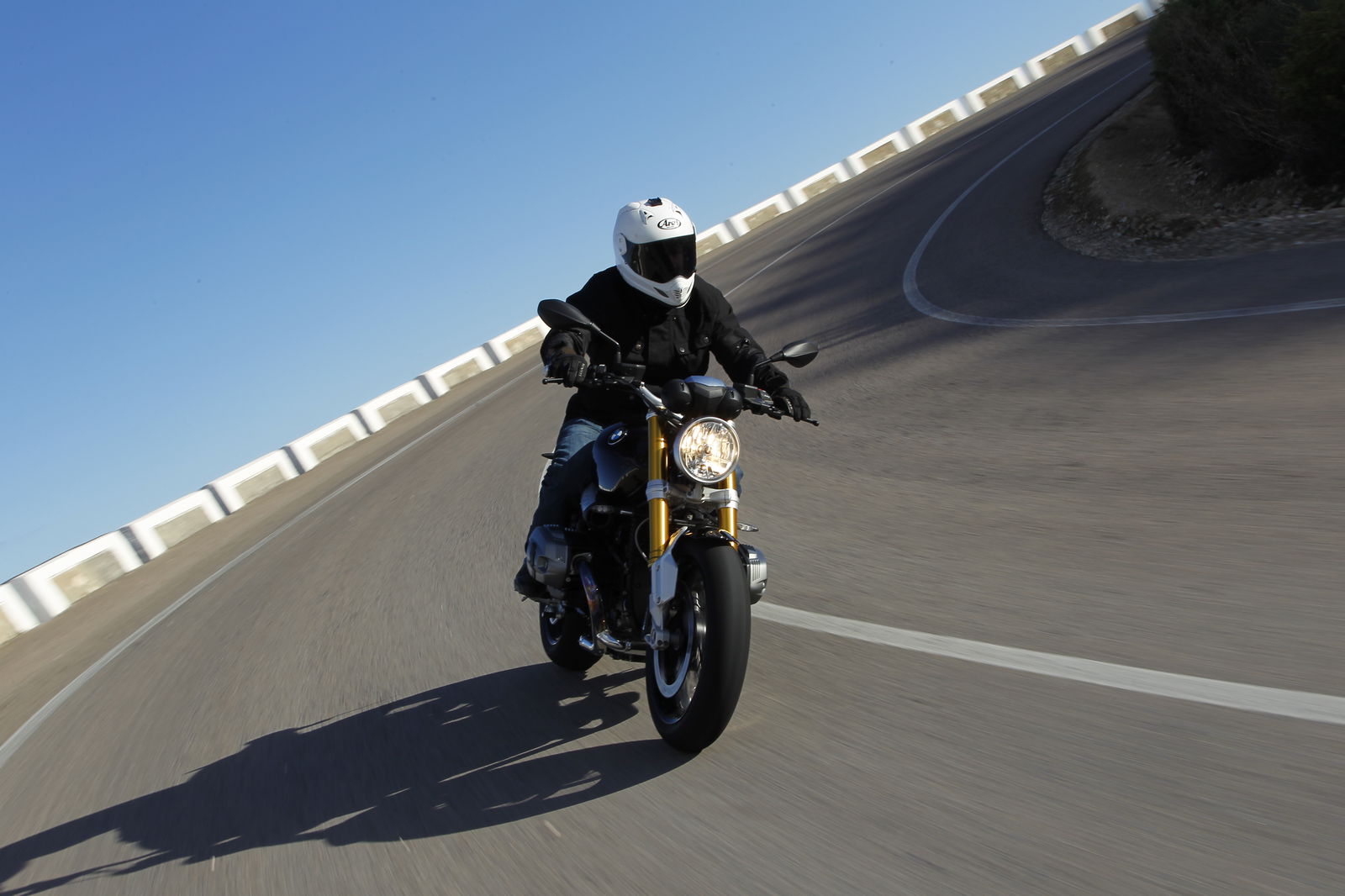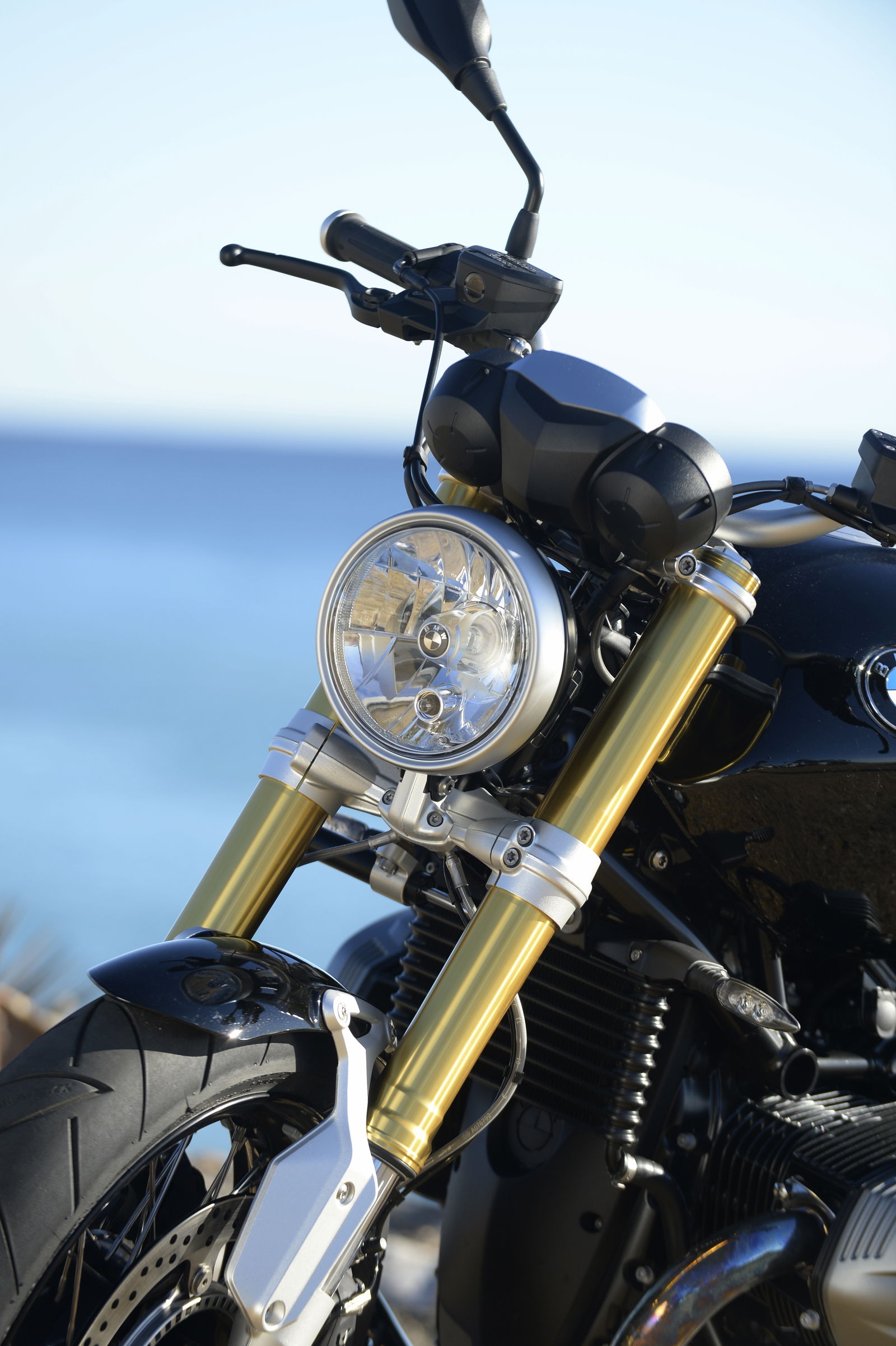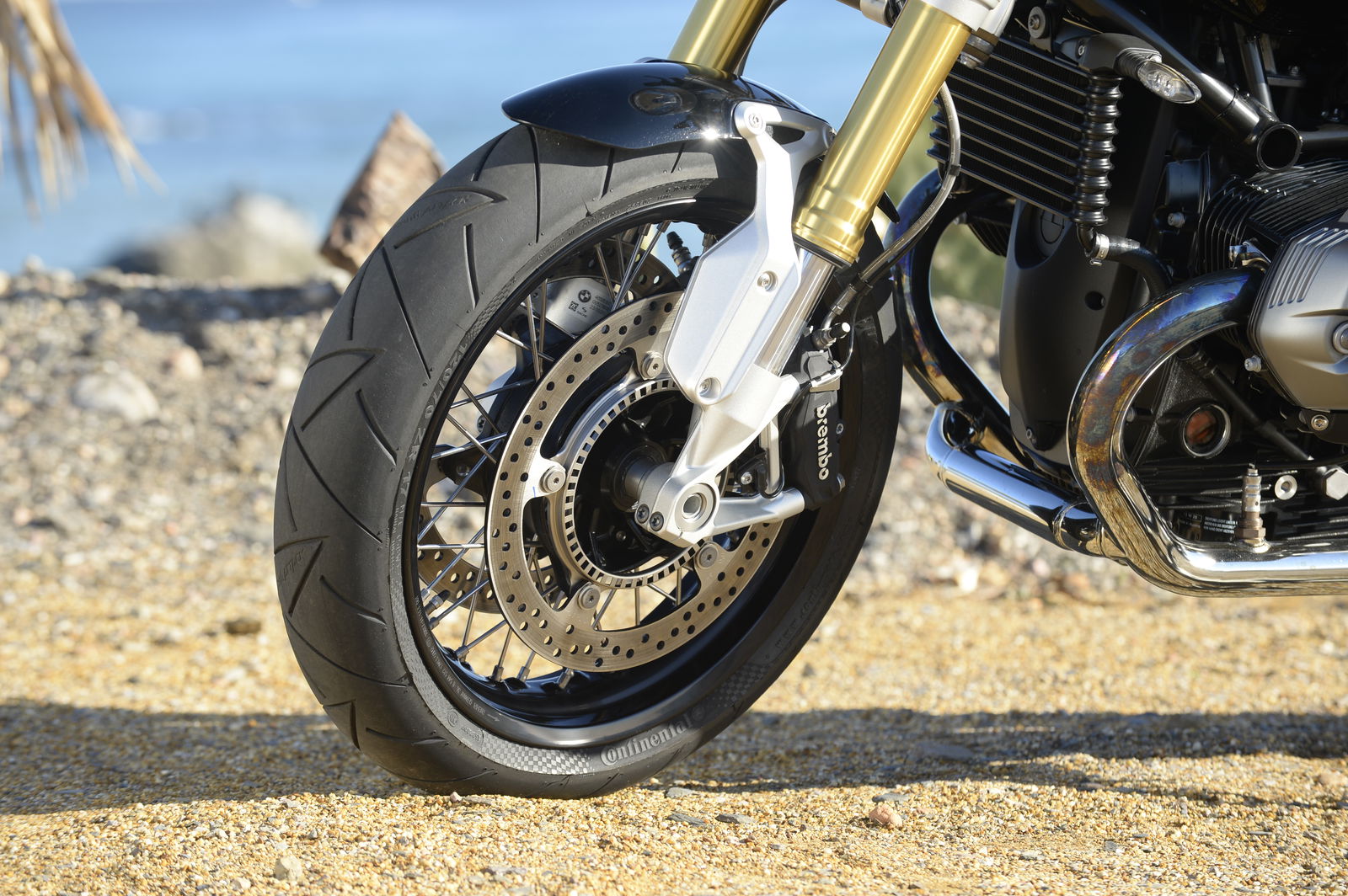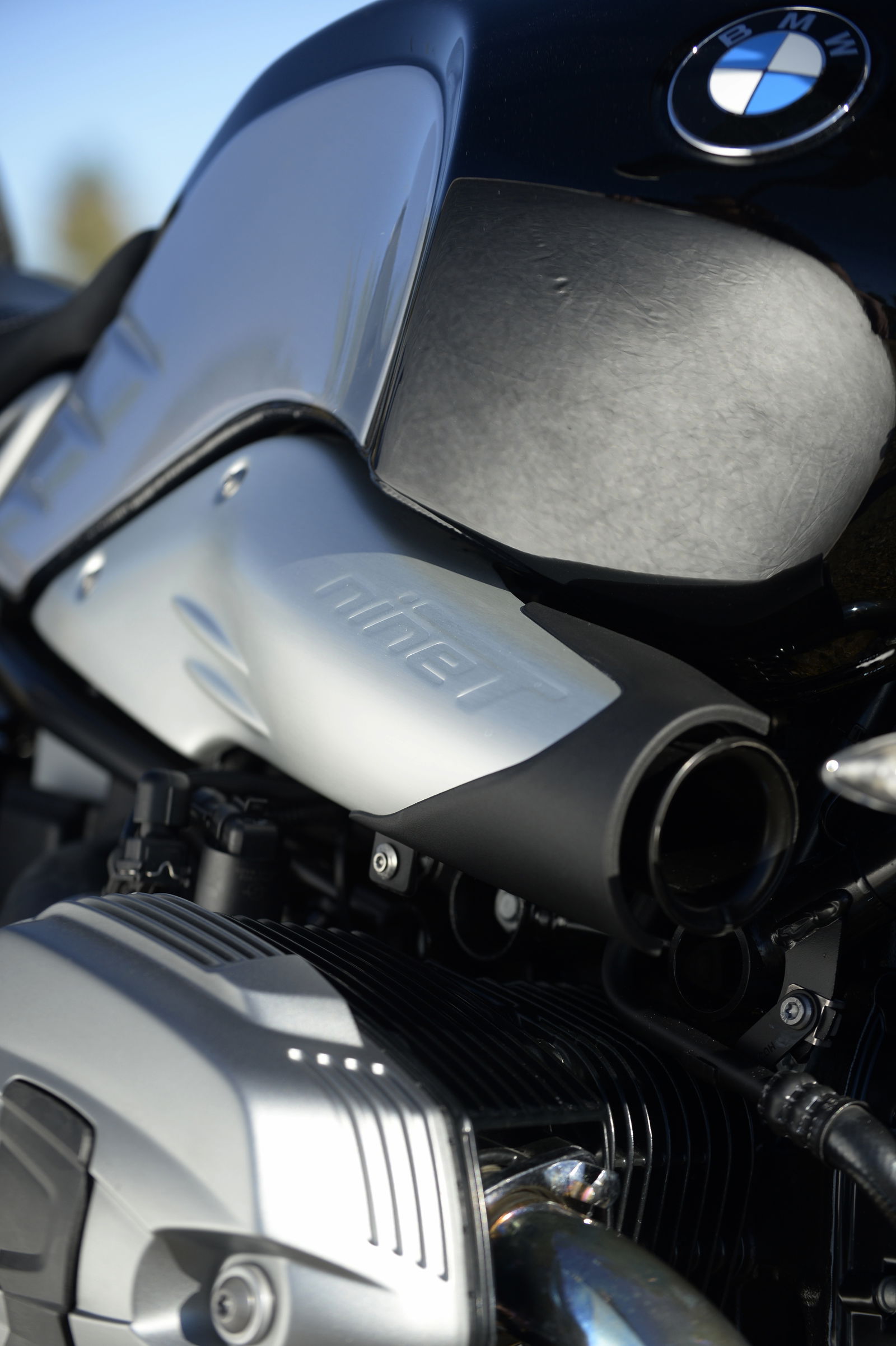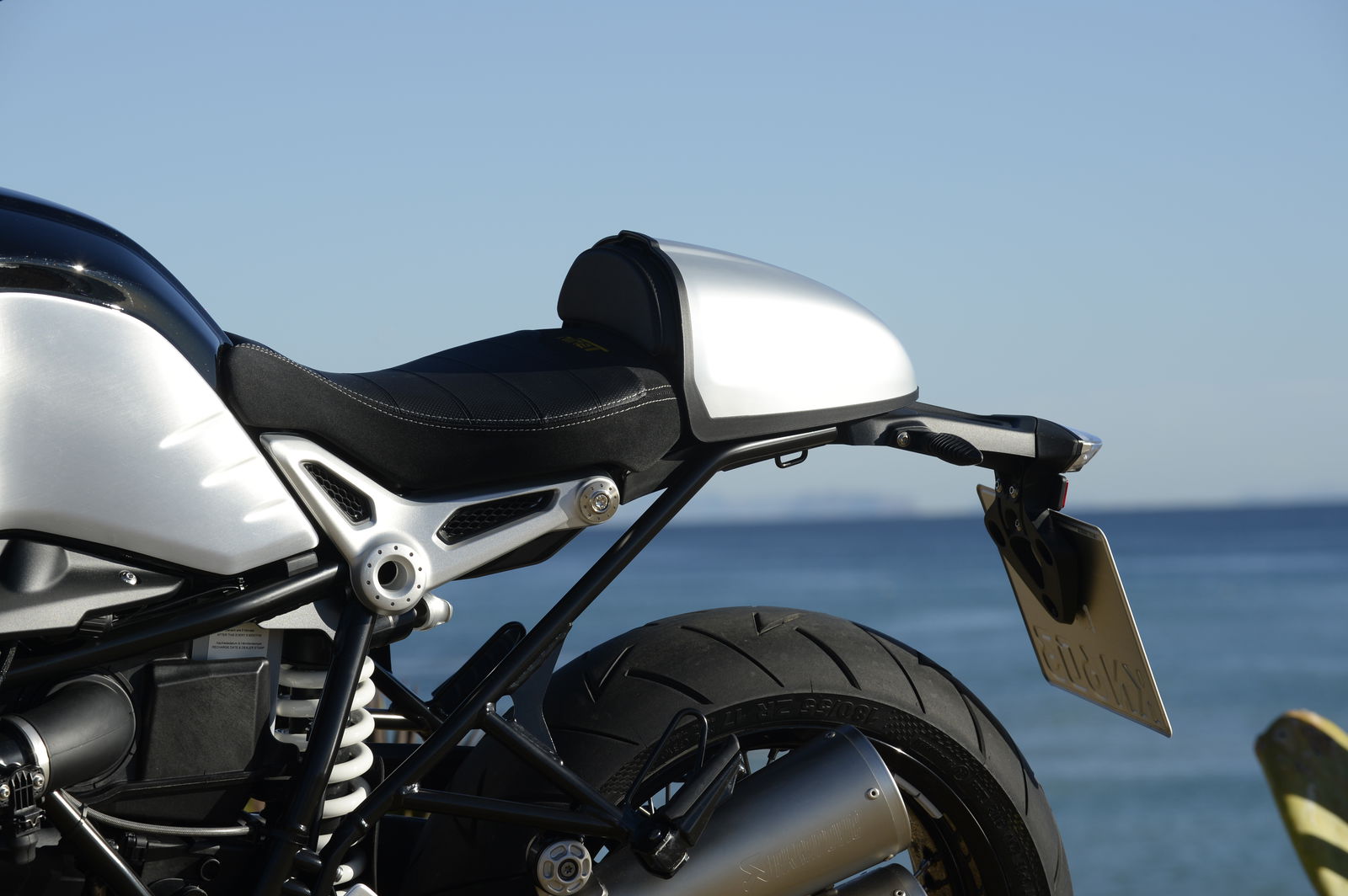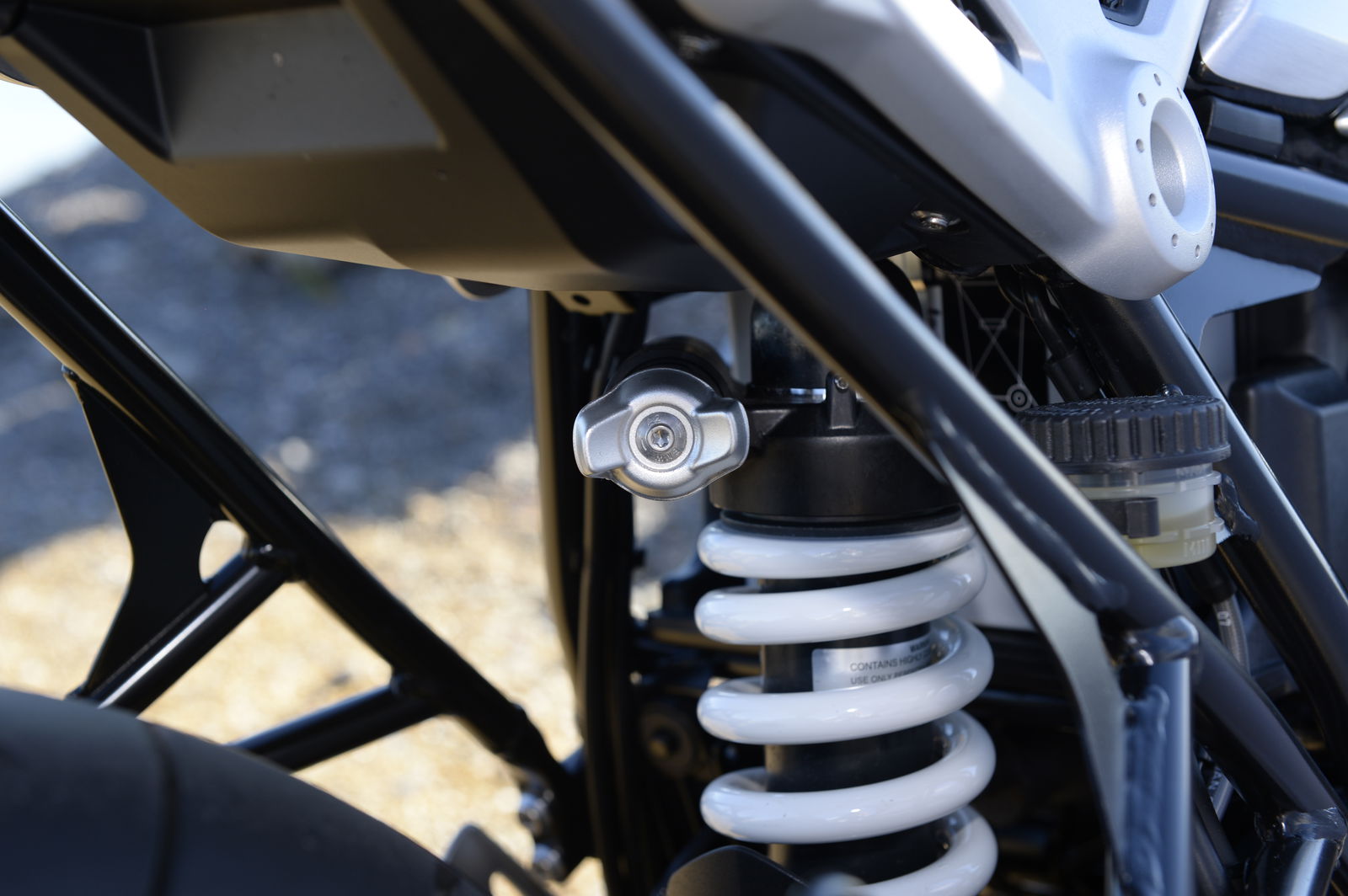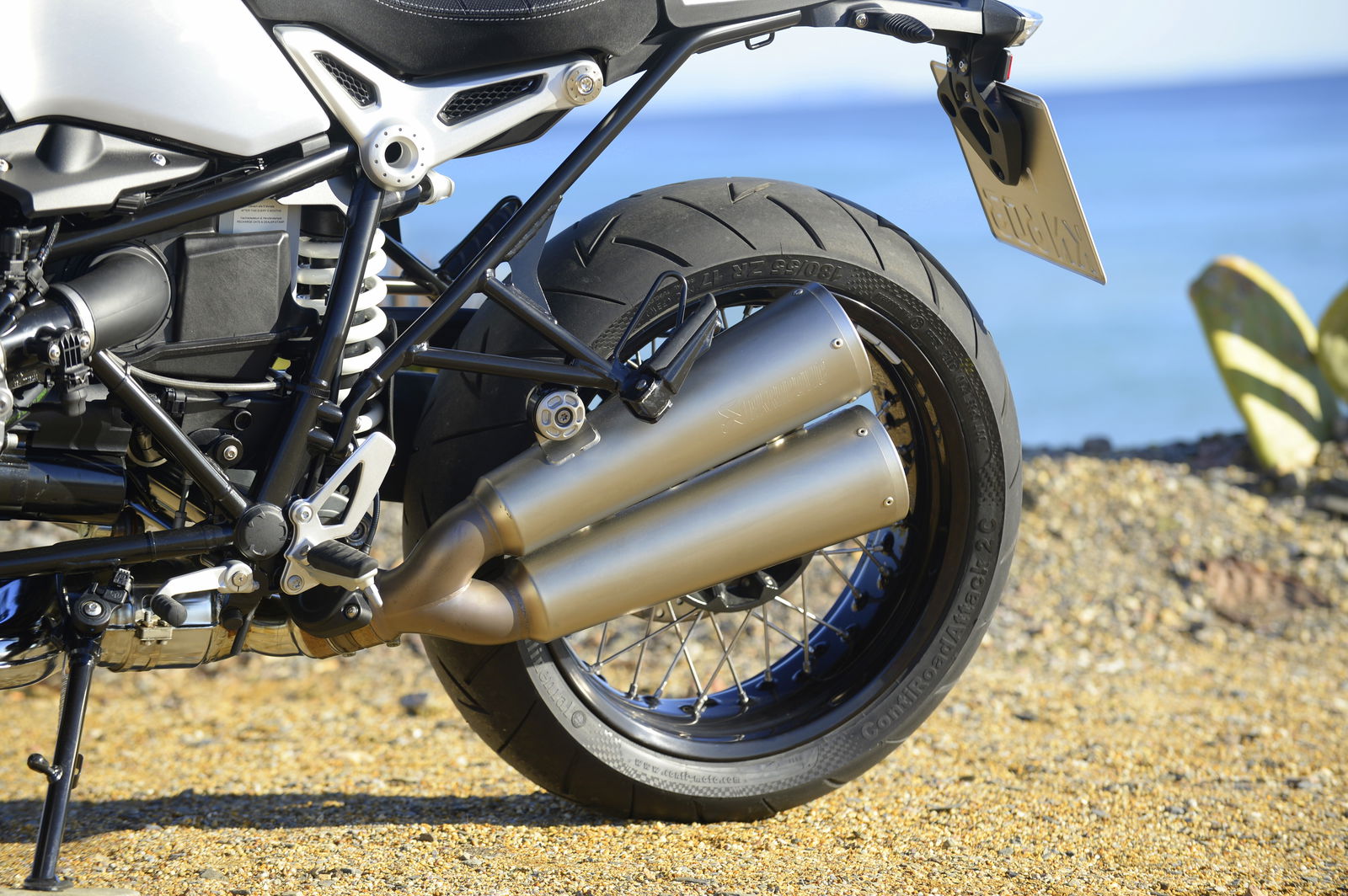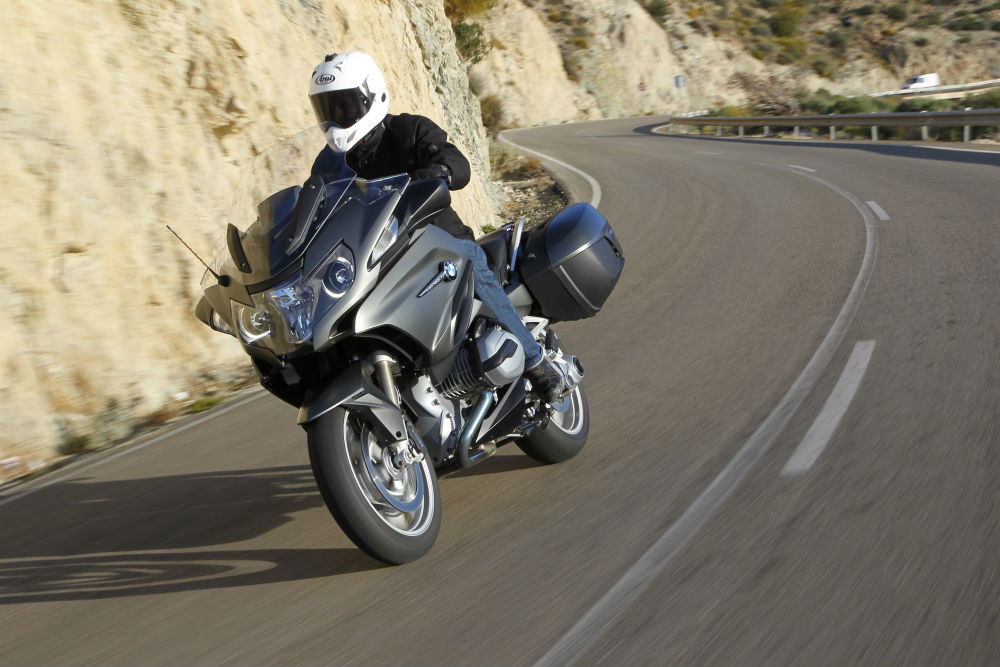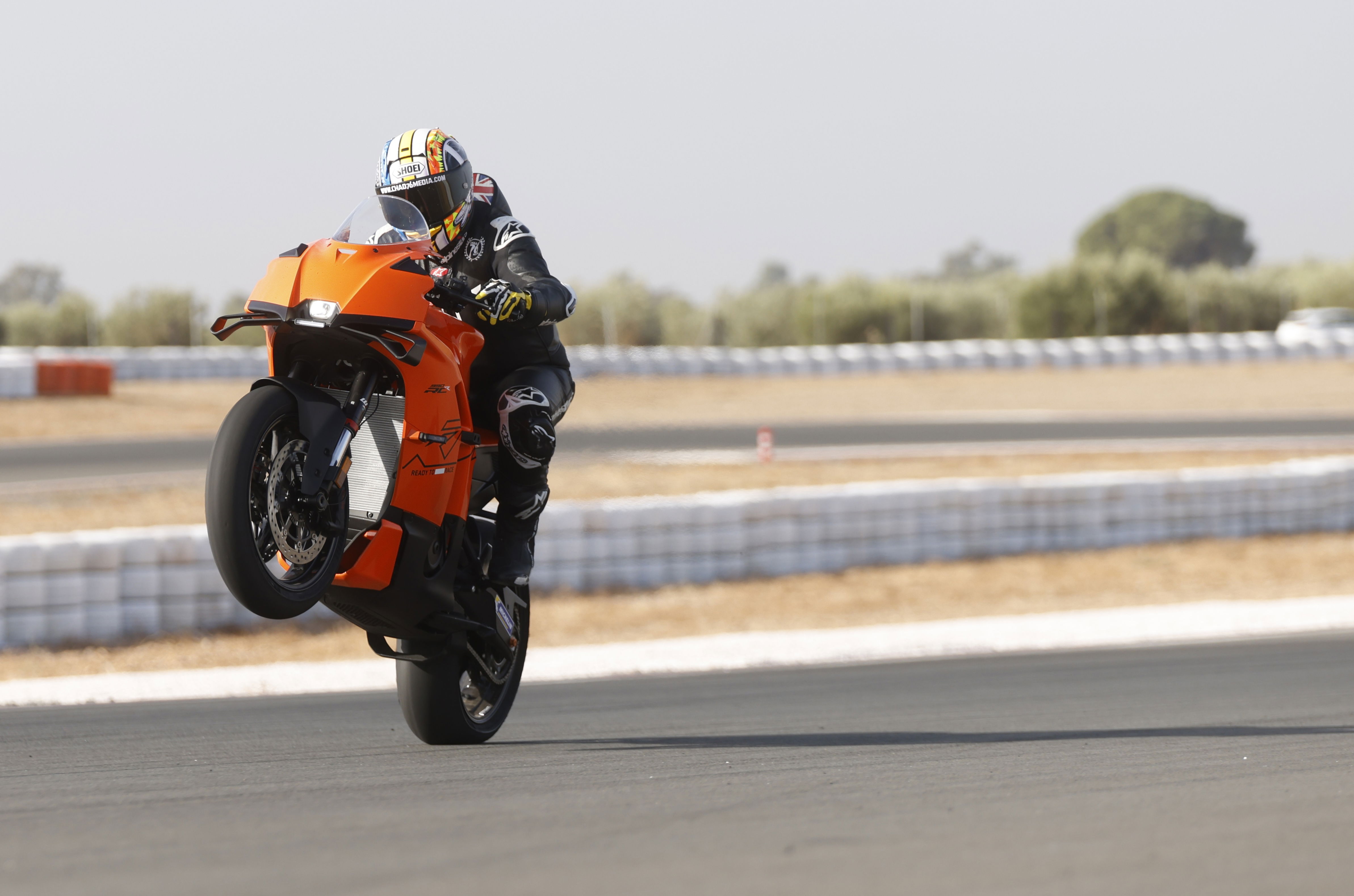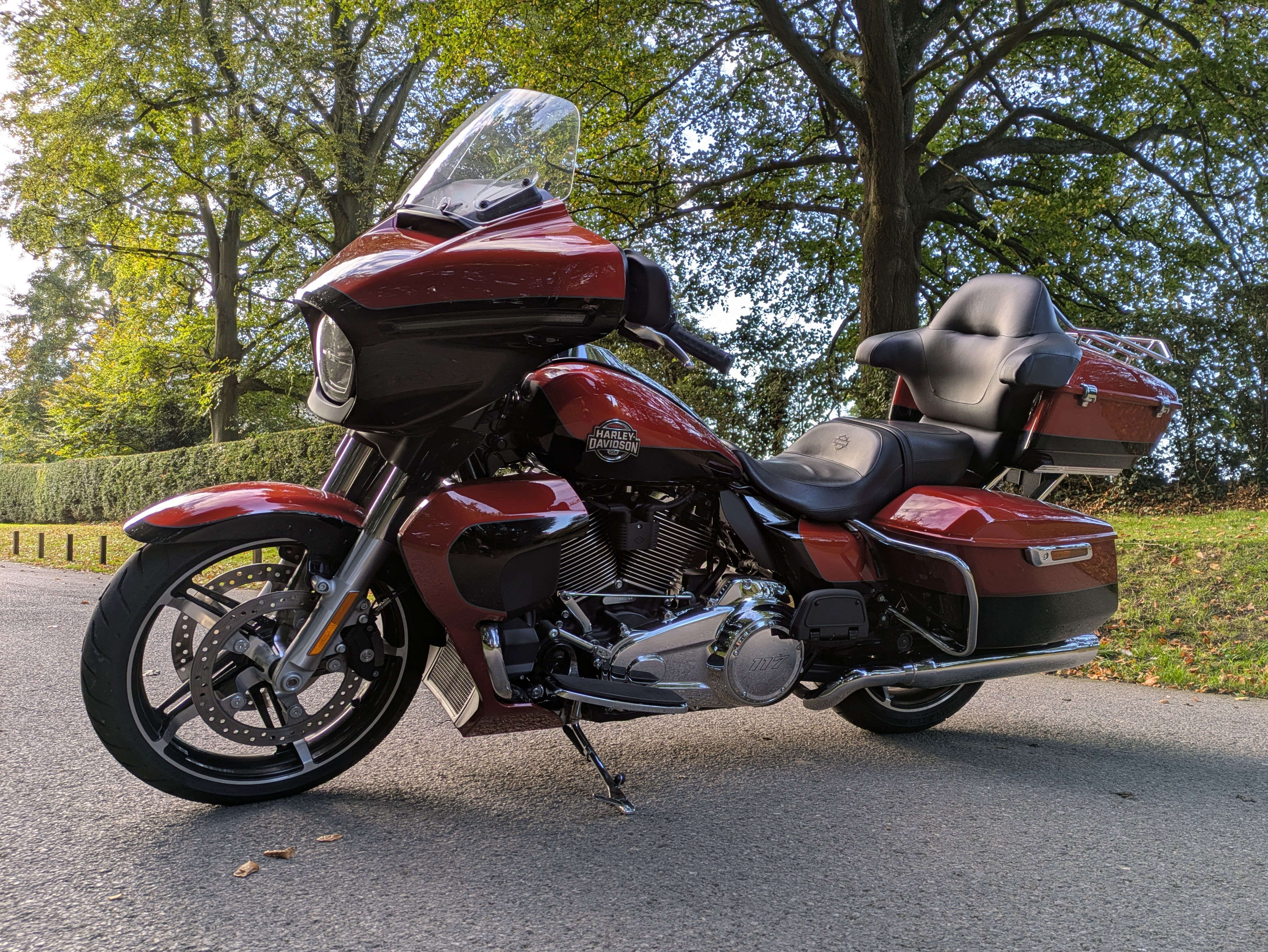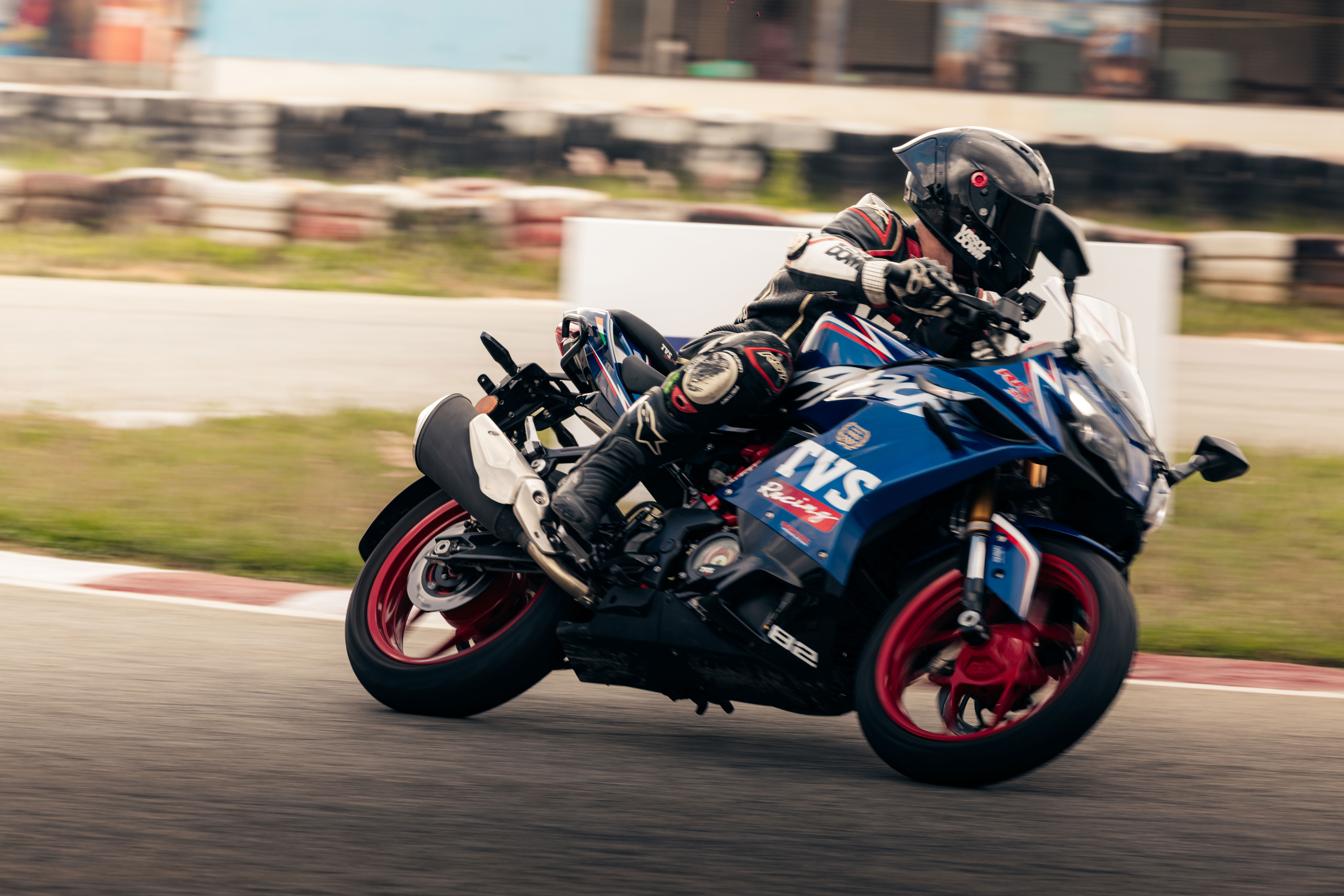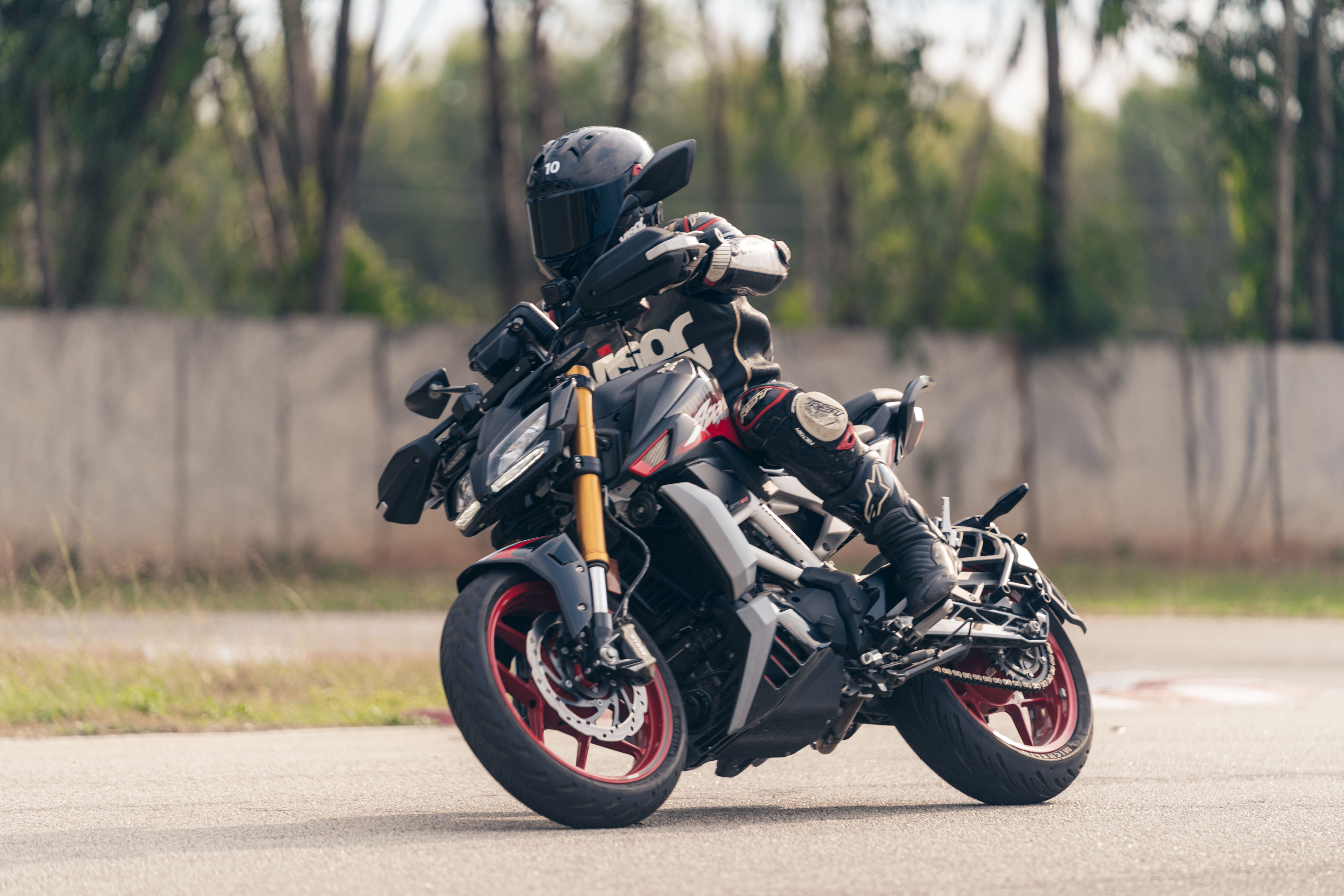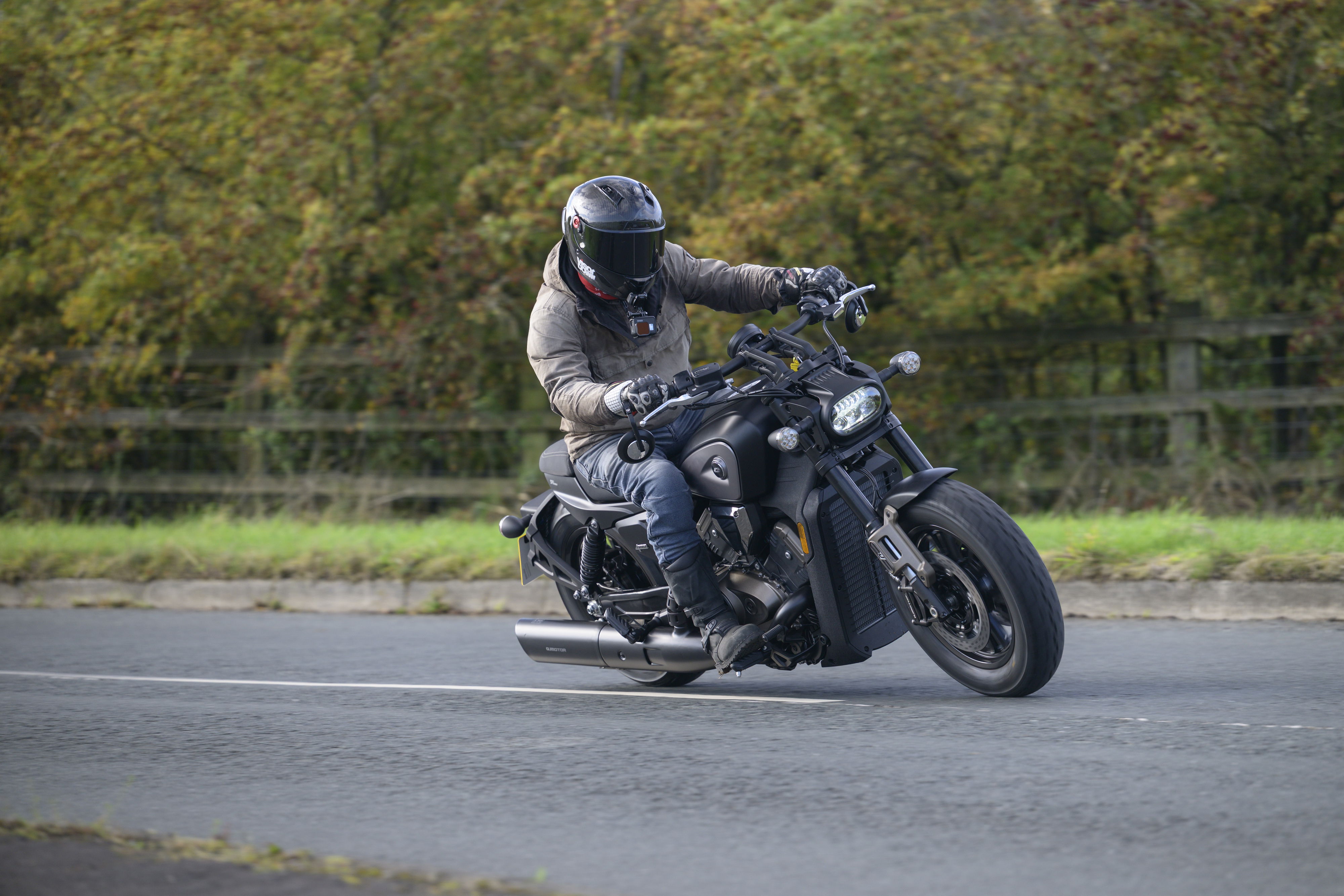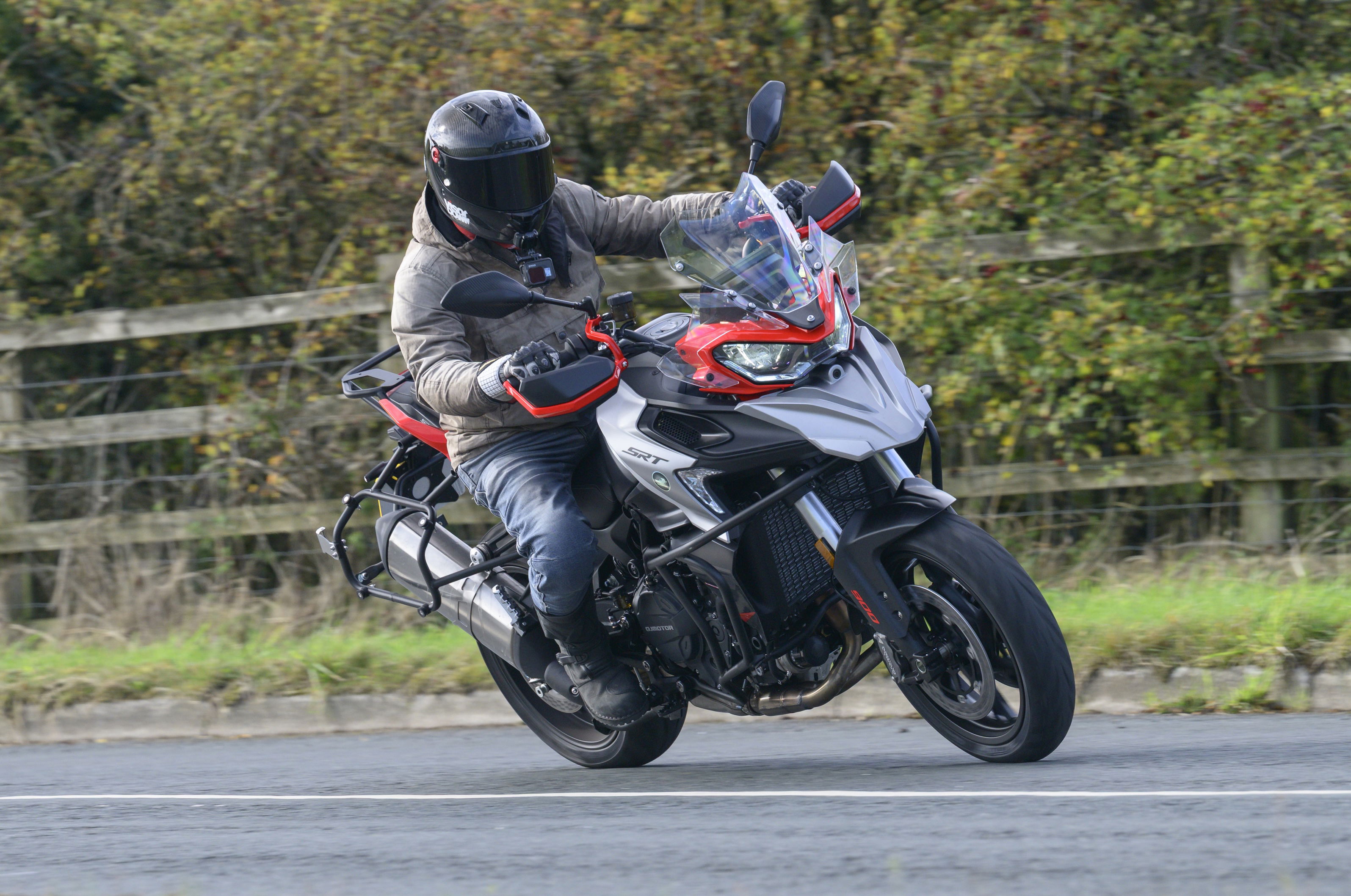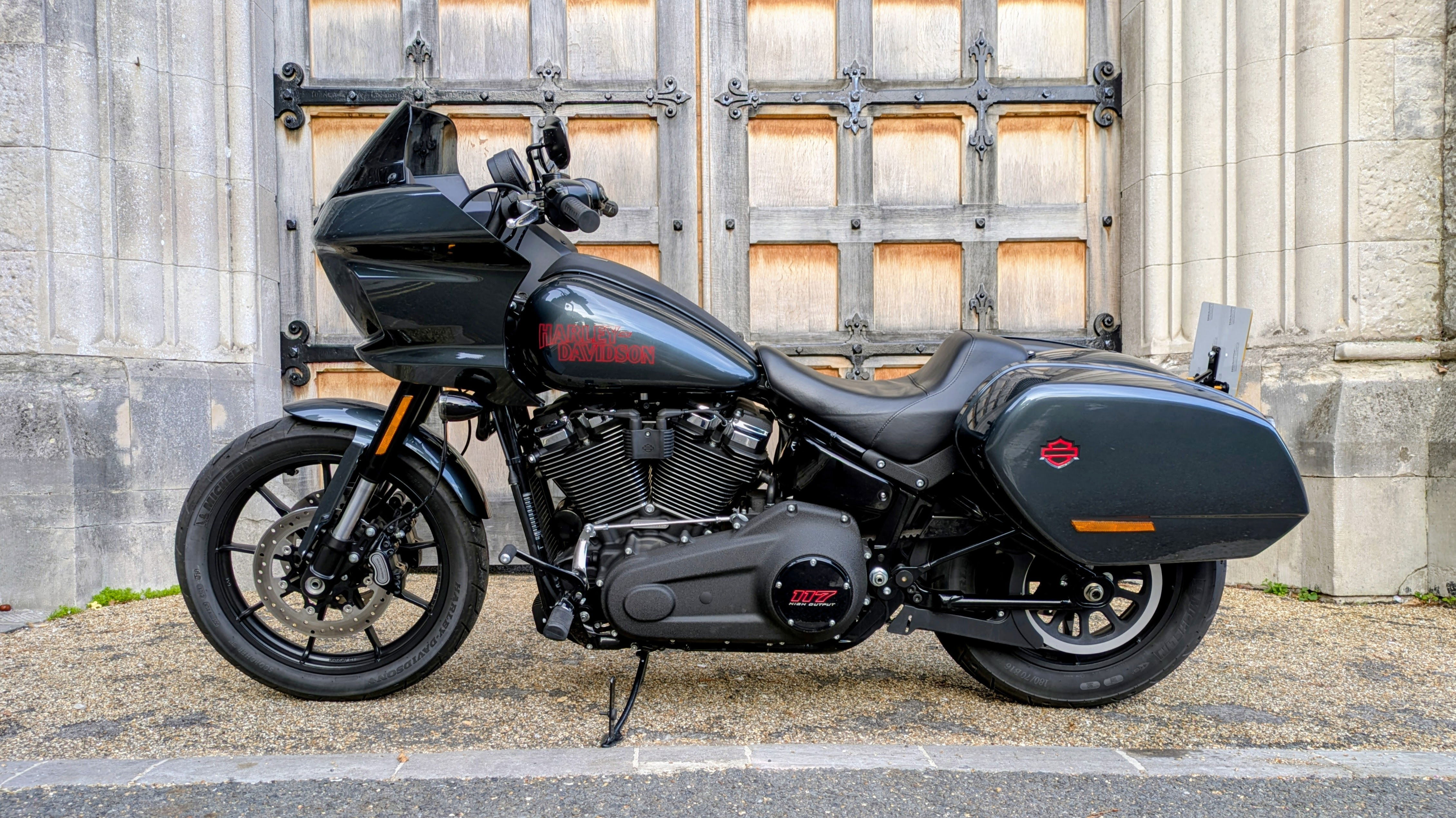First ride: BMW R nineT review
BMW’s new retro naked proves as engaging to ride as it is to look at

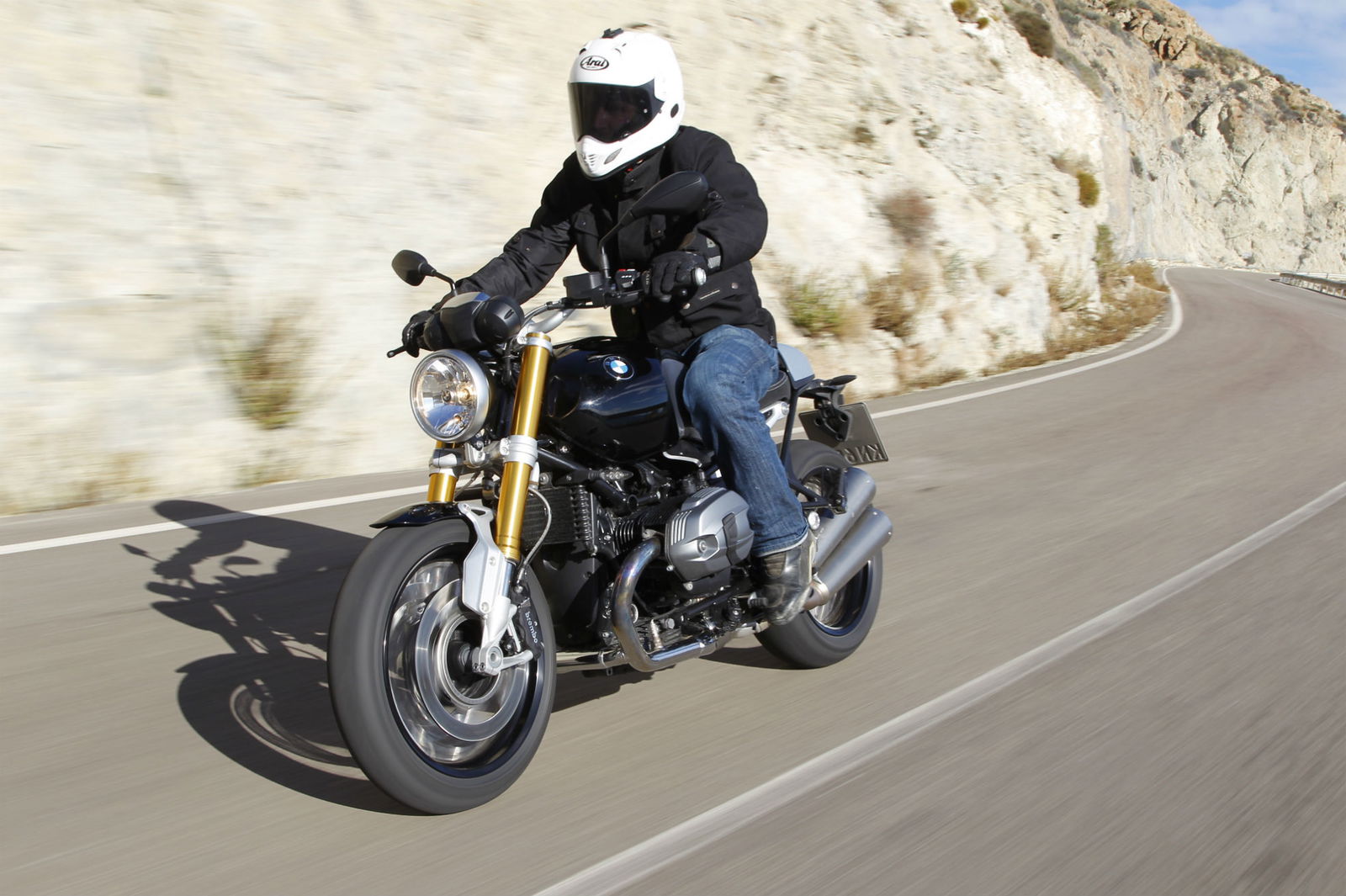
BMW DOESN'T seem able to stop making great bikes at the moment. The firm needs to back off and give others a chance. In December it launched the S1000R, an incredibly good naked derivative of the S1000RR sports like. Now it’s giving us the R nineT, another naked but with retro styling.
BMW first unveiled the nineT, named to mark the firm’s 90th anniversary, in October. So we already knew it was beautiful down to the smallest detail, which is possibly the tiny BMW badge inside the headlight.
Covered in brushed and varnished aluminium, none of which is plastic in disguise, as a styling exercise it should have even the Italians taking notes. It surpasses anything we've seen from Ducati this year. The Superleggera and Monster 1200 are beautiful but ultimately conservative; it's Ducati's job to make exotic red stuff.
It is not part of BMW's established remit to make café racers that look this good. The firm is aiming outside its usual shooting range, at the point where motorcycling and fashion seem to be having an unusual union. Is the café racer scene a significant trend in motorcycling or a fad for hipsters in turn-ups?
Whatever it is, BMW hopes to make it bigger and more accessible with a bike that looks as good as a Roland Sands’ one-off but comes with the German marque's distribution network and dealer support.
‘Yard-built’ specials are the trendiest of all café racers, so the nineT has been designed like a kind of template for customisation. The engine is a stressed member in the tubular steel frame, from which the pillion seat sub-frame can be unbolted and removed. Three bolt holes in the drive shaft await a side-mounted number plate and tail light assembly, to replace existing one and leave nothing behind the rider's seat except air. A fashionable look, until you arrive somewhere with a streak of muddy water up your arse and back.
BMW is leaving it to others to actually make the necessary replacement bits. The only official accessory is a high-level Akrapovic exhaust to replace the standard stacked-twin-silencer system, and requiring the removal of the pillion sub-frame.
The first batch of 2,500 nineT’s has already sold out, meaning orders placed now will be met in June. That’s a fairly good indication that BMW has got the styling right. But when a bike looks this good, the worry is it might be let down by performance. It might be as traditional to ride as it is to look at, like the Moto Guzzi V7.
It doesn’t take much investigation to establish that the nineT's traditional character does extend beyond appearance. The engine comes to life with a rumble that seems to defy EU noise limits. A twist of throttle sends a noticeable sideways rotational force through the chassis from the 1170cc air-cooled boxer twin, something that has been all but eliminated on the latest liquid-cooled boxer models. The nineT is the last model to use the air-cooled boxer engine. BMW says it is confident a bit of tweaking will get it through stricter emission limits due by 2017, allowing its continued survival.
The sound and character of the engine give the nineT a raw, basic feel as you ride it, too, but this machine is not crude or old-fashioned.
It's spectacular. BMW launched it in Spain alongside the new R1200GS Adventure and RT1200RT, both of which have traction control, riding modes and electronically adjustable suspension. There's nothing wrong with fancy electronics, but it's refreshing to get on the nineT and find all set-up decisions made for you. After all, BMW are the bike makers.
There's only one riding mode and it feels superb. The suspension is firm and taught. No surprise that it should be so good; the forks are from the S1000RR, albeit now non-adjustable. The shock is adjustable for preload and rebound damping.
The only electronic intervention is from the ABS, which is probably necessary. The nineT shares the Brembo monobloc calipers of the 260kg GS Adventure and 274kg RT. On those they're powerful enough to allow hard braking with one finger on the lever. On the 222kg nineT, they're almost too much. The lightest touch compresses the forks, not because they're too soft but because the stopping force is so great. It takes a period of recalibration to adjust to the gentleness required. I still found myself grabbing too much.
The nineT feels light and agile, the steering precise. It’s easily tipped into corners with the help its straight, wide bars, which are high enough for comfort but not so much as to compromise a sense of purpose.
Possibly the nineT's greatest asset though is that air-cooled boxer engine. On paper, next to this year's new super nakeds, including BMW's own 160hp S1000R, the nineT could look upstaged in performance terms, like a laid-back alternative. But there's really nothing laid back about a 110hp boxer in full stride. It's only 3hp less than the original Honda FireBlade made in 1992, but with a twin's low-down grunt.
The nineT's throttle response is sharp, crisp and sporty at high revs. At lower revs it’s as smooth as its varnished aluminium seat hump, while still delivering that grunt. On twisty roads, you can put it in a high gear and leave it there, driving ever-so-smoothly out of each bend from under 3,000rpm, focussing on nothing but your line, cornering speed and the nineT's responsive handling.
Then when you hit a straight, the surprise is that it also likes to rev. The power builds linearly to its peak, not far below the 8,500rpm red line, and it loves to go there, the engine note eagerly rising to a roar. When you shut off, a moment passes before a burble emits from that double Akrapovic system, like a restless reminder of the latent power.
It's very comfortable. The ergonomics seemed perfect for the 5'9" tester, the reach to the bars just enough to provide some upper body support without putting too much weight on my arms. Perhaps the bike was just too engaging for any trace of discomfort to register.
After hours on it, on the way back to the hotel on a straight dual carriageway, I noticed my bum ached from the thinly padded café racer-style seat, which has ‘nineT’ stitched into it. I’d live with that to have this bike. Put a café racer bikini fairing on it, as I’m sure someone will, and it could even make the perfect all-rounder. That seat hump doubles as a storage compartment big enough for waterproofs. For more space, you’d probably have to make do with a tank bag.
BMW has been at pains to tell us it is not a retro bike. Instead it's modern with a traditional flavour. It seems an unnecessary distinction since that's what retro means.
But pedantry aside, the claim stands up. The nineT is as accomplished as you'd expect a 2014 bike to be, but with a traditional character you couldn't normally hope for.
I've been dismissive of retro-style bikes in the past, claiming they're always a compromise in the name of style. At £11,600, the nineT costs £200 more than the high-spec edition of the S1000R, with traction control and semi-active suspension, so there is a sacrifice to be made for the café-racer image. But the nineT has a character and personality that other bikes do not, so it's worth it.
Model tested: BMW R nineT
Price: £11,600
Power: 110hp
Weight: 222kg
Torque: 87.7lbft
Seat height: 785mm
Colours: black
Availability: June for orders placed now
Read our review of BMW's S1000R here.
Click here to read owner's reviews of the BMW R Nine T.
